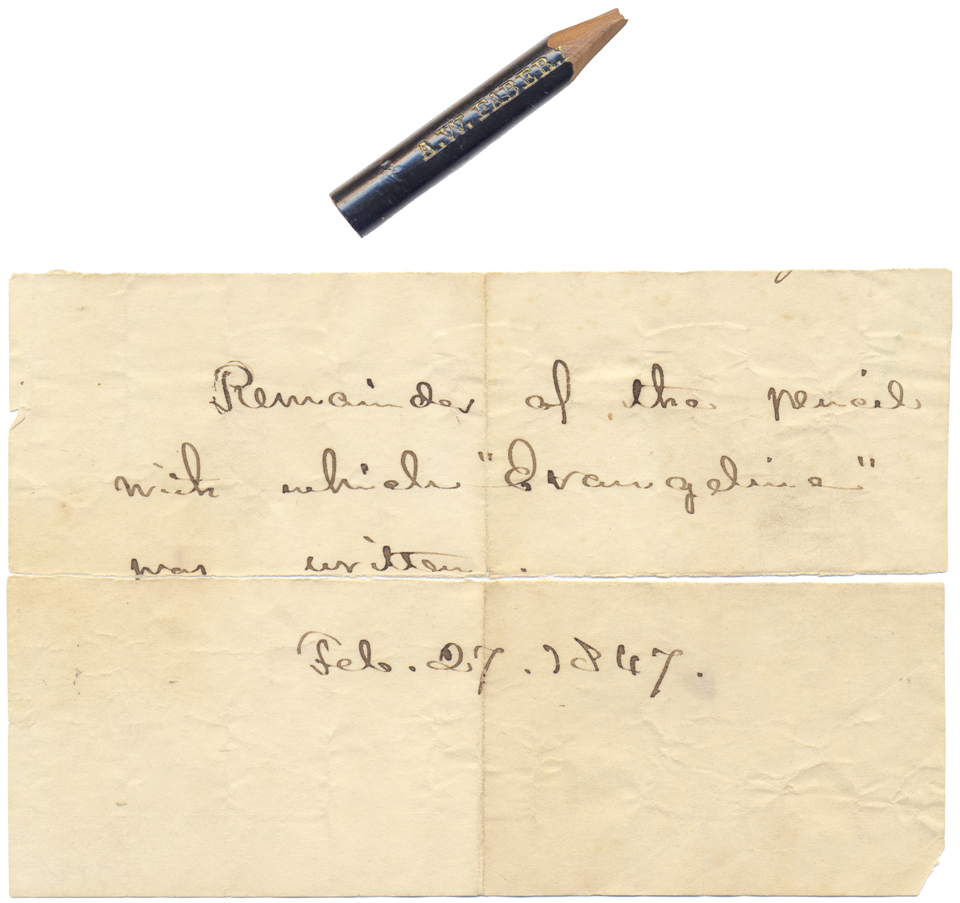
One hundred and seventy years ago this month, Henry Wadsworth Longfellow completed the first draft of his epic poem Evangeline. In his journal on February 27, 1847 (incidentally Longfellow’s 40th birthday), Henry wrote “Saturday 27. “Evangeline” is ended. I wrote the last lines this morning.”
Longfellow kept the stub of the pencil used to write out the first draft of Evangeline, as he did with many of his works. We know this because along with the remnants of the pencils he kept short notes describing which works were initially written with the instrument. The note that accompanied the Evangeline pencil, pictured above, is written in Longfellow’s hand and reads “Remainder of the pencil with which “Evangeline” was written. Feb. 27. 1847.”
Evangeline was published later in 1847. It was Longfellow’s first epic poem, and was well received by both critics and the public. By 1857 it had sold over 10,000 copies and been translated into at least 12 languages. Evangeline did much to propel Longfellow to prominence as an American literary figure.
Though based on an actual event, the mid-18th century expulsion of the Acadian people from the Canadian Maritime provinces by the British, Evangeline was a work of fiction and Longfellow exercised considerable freedom with historical facts. Nonetheless, the characters and events in Evangeline were taken as truth by many, even during Longfellow’s lifetime. Multiple souvenirs related to the poem were sent to Longfellow by admirers and well-wishers, including building fragments from Grand-Pré, the village in Nova Scotia that acts as the setting for the poem’s beginning, as well as a cane incorporating a piece claimed by the sender to be “a Relic from the Alms House where Evangeline found Gabriel.”
Evangeline had significant influence in that it brought the story of the Acadians to light for many Americans, and the poem’s effects are still seen today as in Evangeline-centered tourism in Nova Scotia and Louisiana. In addition to being a love story, the poem’s portrayal of the United States as a place of refuge for displaced Acadians gives it new relevance in the context of 21st century geopolitics. Whether or not Longfellow foresaw the lasting impact his poem would have is unknown, but clearly he thought enough of it to preserve the writing implement with which he put the poem’s words to paper.
|
March 07, 2017
|
Last updated: March 7, 2017
